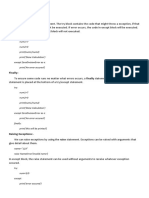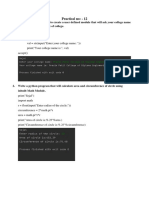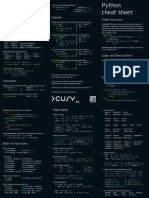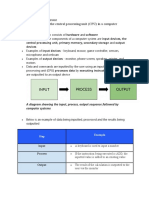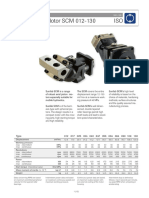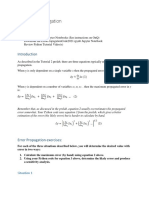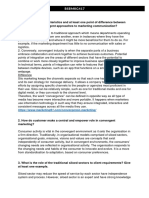0% found this document useful (0 votes)
19 views8 pagesPractical List
The document outlines a series of lab exercises for advanced Python programming, covering topics such as class implementation, method and operator overloading, inheritance, abstraction, encapsulation, and data extraction. Each lab includes example code demonstrating the concepts, such as a Calculator class, a Greet class for method overloading, and a Point class for operator overloading. Additional labs focus on user-defined exceptions, string parsing, DataFrame creation with pandas, and array slicing with numpy.
Uploaded by
JobiCopyright
© © All Rights Reserved
We take content rights seriously. If you suspect this is your content, claim it here.
Available Formats
Download as DOCX, PDF, TXT or read online on Scribd
0% found this document useful (0 votes)
19 views8 pagesPractical List
The document outlines a series of lab exercises for advanced Python programming, covering topics such as class implementation, method and operator overloading, inheritance, abstraction, encapsulation, and data extraction. Each lab includes example code demonstrating the concepts, such as a Calculator class, a Greet class for method overloading, and a Point class for operator overloading. Additional labs focus on user-defined exceptions, string parsing, DataFrame creation with pandas, and array slicing with numpy.
Uploaded by
JobiCopyright
© © All Rights Reserved
We take content rights seriously. If you suspect this is your content, claim it here.
Available Formats
Download as DOCX, PDF, TXT or read online on Scribd
/ 8



































